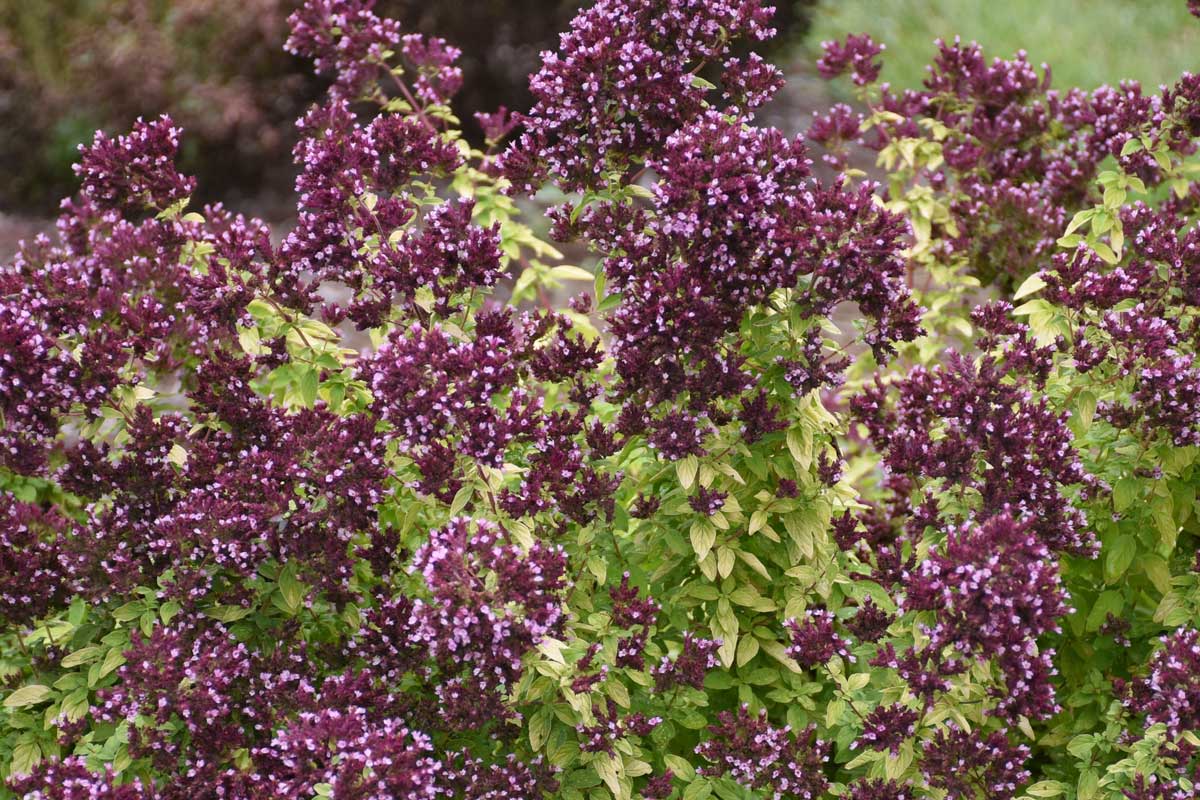These seven tough pollinator plants can take wind, heat, full sun, and extremely well-drained soil without much supplemental water.
In An Urban Rooftop Garden for Pollinators, Hayden Regina writes:
“Standouts such as calamint (Calamintha nepeta subsp. nepeta, Zones 5–7), ‘Onyx and Pearls’ penstemon (Penstemon digitalis ‘Onyx and Pearls’, Zones 3–8), and ‘Drops of Jupiter’ oregano (Origanum ‘Drops of Jupiter’, Zones 4–9) were expanded for their durability throughout the growing season and the bees’ obsession with them.”
If they can survive on a rooftop, imagine how well they could do in slightly better conditions.
Tough Pollinator Plants
‘Trevor’s Blue Wonder’ thistle

Name: Cirsium rivulare ‘Trevor’s Blue Wonder’
Zones: 5–8
Size: 3 to 4 feet tall and 2 feet wide
Conditions: Full sun; moist, well-drained soil
Native range: Europe
While calling its flowers “blue” is a stretch, this Cirsium has become our favorite rebloomer, and the bees love it as much as we do. It has great architectural foliage and seed structure, though it is nonspiny and doesn’t reseed.
Winter aconite

Name: Eranthis hyemalis
Zones: 3–7
Size: 4 to 6 inches tall and wide
Conditions: Full sun to partial shade; moist, well-drained soil
Native range: Europe
Our pollinator friends show up very early to look for food, and I knew from my time at Fernwood Botanical Garden that the aconite was a spring favorite that beat all other flowers to the punch. This little spring bulb seems to take any condition and spreads nicely year to year.
‘Onyx and Pearls’ penstemon

Name: Penstemon digitalis ‘Onyx and Pearls’
Zones: 3–8
Size: 36 to 42 inches tall and wide
Conditions: Full sun to partial shade; moist, well-drained soil
Native range: North America
Beautiful white spring flowers, a lovely summer seed structure, and fiery fall color are all trumped by this plant’s extreme drought tolerance and durability.
Calamint

Name: Calamintha nepeta subsp. nepeta
Zones: 5–7
Size: 1 to 2 feet tall and wide
Conditions: Full sun; moist, well-drained soil
Native range: Mediterranean region, Europe
This is an oldie but goodie. I am not sure any garden is complete without calamint. I first fell in love with it at the Lurie Garden. Clouds of white flowers form from early summer until frost.
Carthusian pinks

Name: Dianthus carthusianorum
Zones: 4–8
Size: 2 to 3 feet tall and 1 to 2 feet wide
Conditions: Full sun; well-drained soil
Native range: Europe
This Dianthus became a butterfly favorite on the rooftop, and what I love about the plant overall is that the foliage reads like a grass. Texturally it gets lost among the mix, but the blooms dance above the rest of the matrix.
‘Caradonna’ salvia

Name: Salvia nemorosa ‘Caradonna’
Zones: 4–8
Size: 1 to 2 feet tall and wide
Conditions: Full sun; moist, well-drained soil
Native range: Europe, west-central Asia
The dark stems and upright habit of this salvia are hard to beat and are perfect for my limited space. With a midseason haircut, it often produces a second round of blooms, which is always appreciated by resident pollen collectors.
‘Drops of Jupiter’ oregano

Name: Origanum ‘Drops of Jupiter’
Zones: 4–9
Size: 2 feet tall and 3 feet wide
Conditions: Full sun; moist, well-drained soil
Native range: Europe, west-central Asia
This ornamental herb looks as beautiful as it smells. ‘Drops of Jupiter’ features bright yellow-chartreuse leaves when planted in direct sun, and mauve flowers that bloom from midsummer to early fall. Even after the flowers depart, purple calyxes offer a moody contrast to the bright foliage. You are sure to love this plant a much as the bees and butterflies do.
Learn more about caring for pollinators with plants:
Pollinator’s Favorite Nectar Plants
7 Important Host Plants for Pollinators
Simple Ways to Help Pollinators
Hayden Regina is a landscape architect and planting designer in Chicago.
